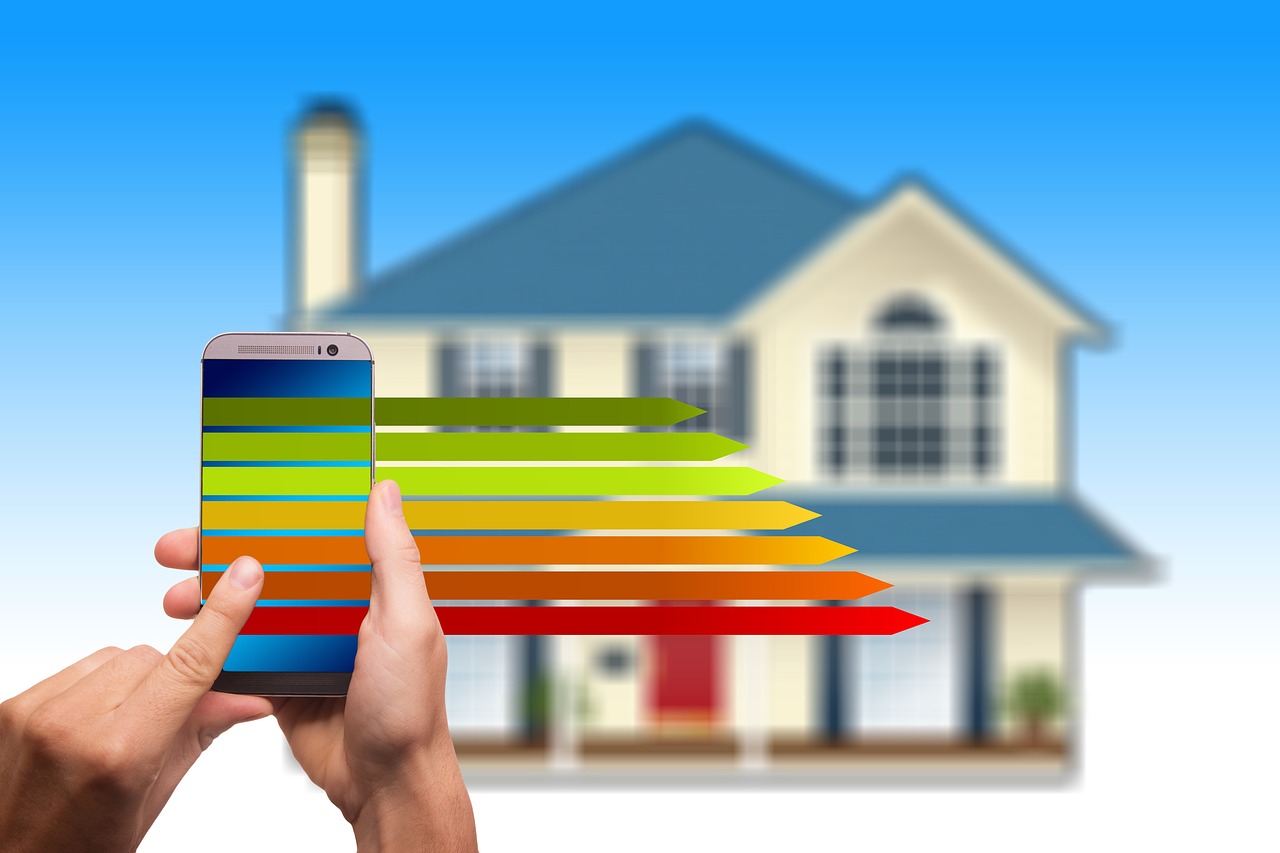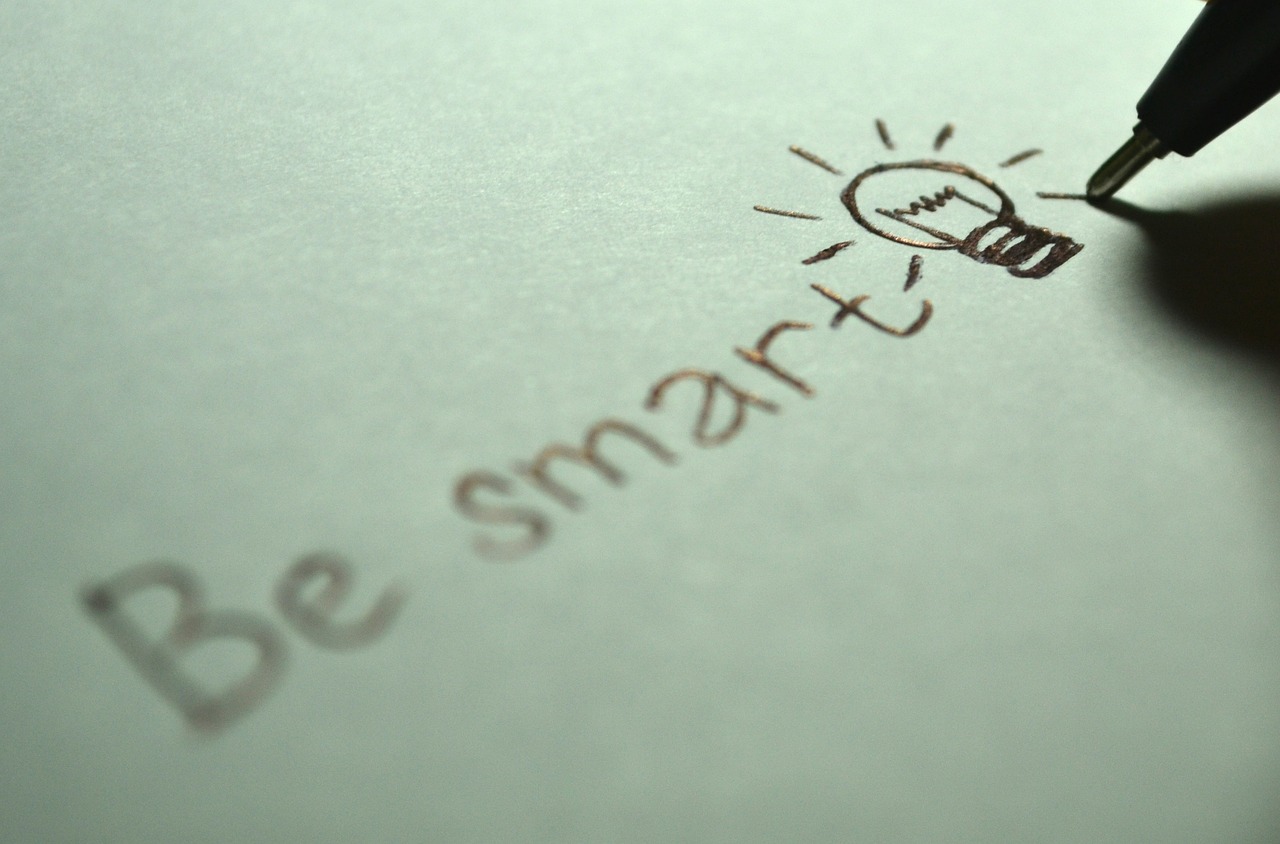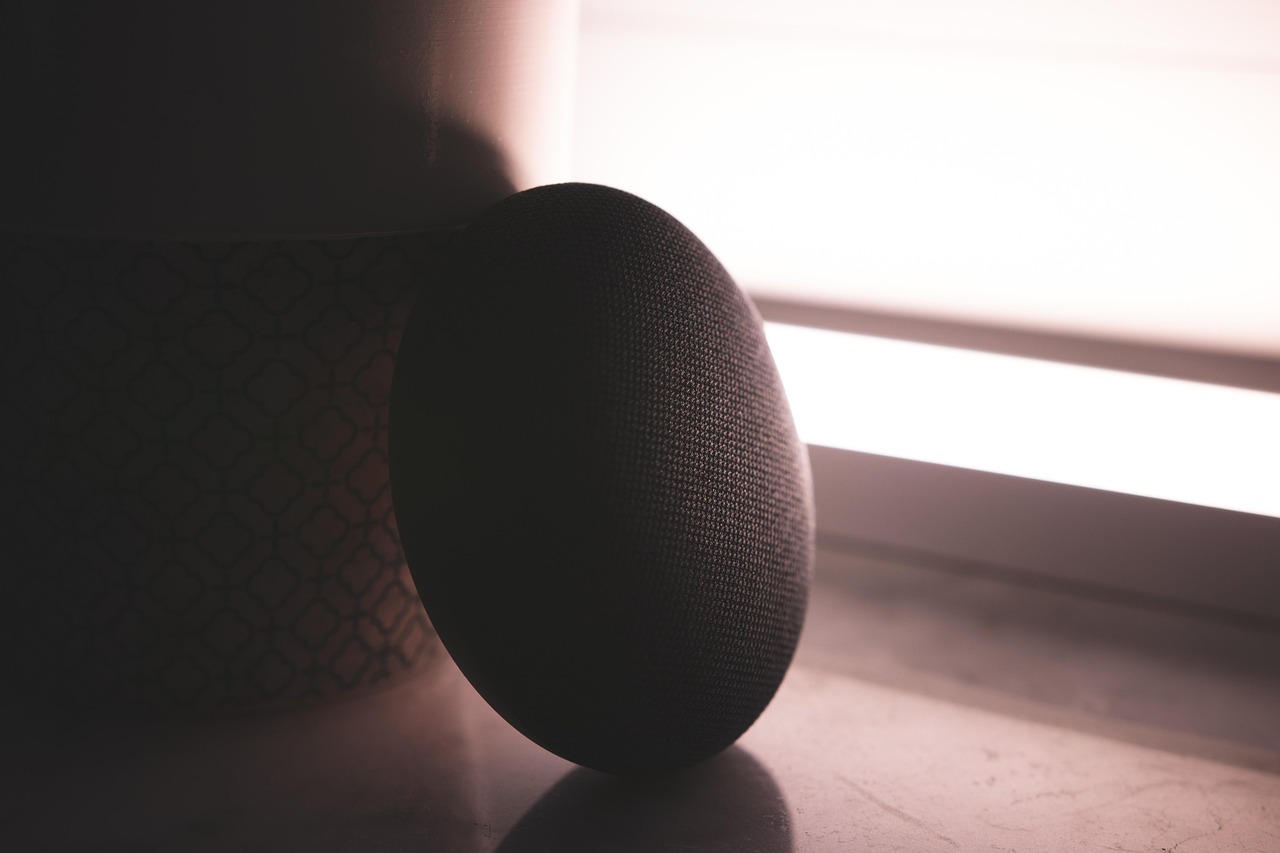This article delves into the world of smart home devices, specifically tailored for beginners. It provides insights into essential devices that can significantly enhance your home’s convenience, security, and efficiency.
Understanding Smart Home Technology
Smart home technology refers to a range of devices that connect to the internet, enabling users to control and automate various functions within their homes. This technology not only simplifies daily tasks but also optimizes overall energy use, making it an attractive option for homeowners.
Key Benefits of Smart Home Devices
- Energy Savings: Smart devices help monitor and reduce energy consumption, leading to lower utility bills.
- Enhanced Security: With real-time alerts and monitoring, smart security devices provide peace of mind.
- Improved Comfort: Automating home environments can lead to increased comfort for all residents.
- Increased Convenience: Voice-controlled and app-integrated devices streamline daily routines.
Essential Smart Home Devices for Beginners
- Smart Speakers: These devices serve as hubs for controlling other smart gadgets, offering voice-activated assistance.
- Smart Lighting: Control brightness and color remotely, enhancing ambiance and energy efficiency.
- Smart Thermostats: Learn your heating and cooling preferences to optimize energy usage.
- Smart Security Systems: Cameras and doorbell monitors enhance home safety with remote monitoring capabilities.
- Smart Plugs: Control any device plugged into them, providing an easy entry point into home automation.
Conclusion: Your Smart Home Journey Begins
Embarking on your smart home journey can significantly enhance your living experience. By prioritizing devices that focus on convenience, security, and efficiency, you can create a connected home tailored to your needs.
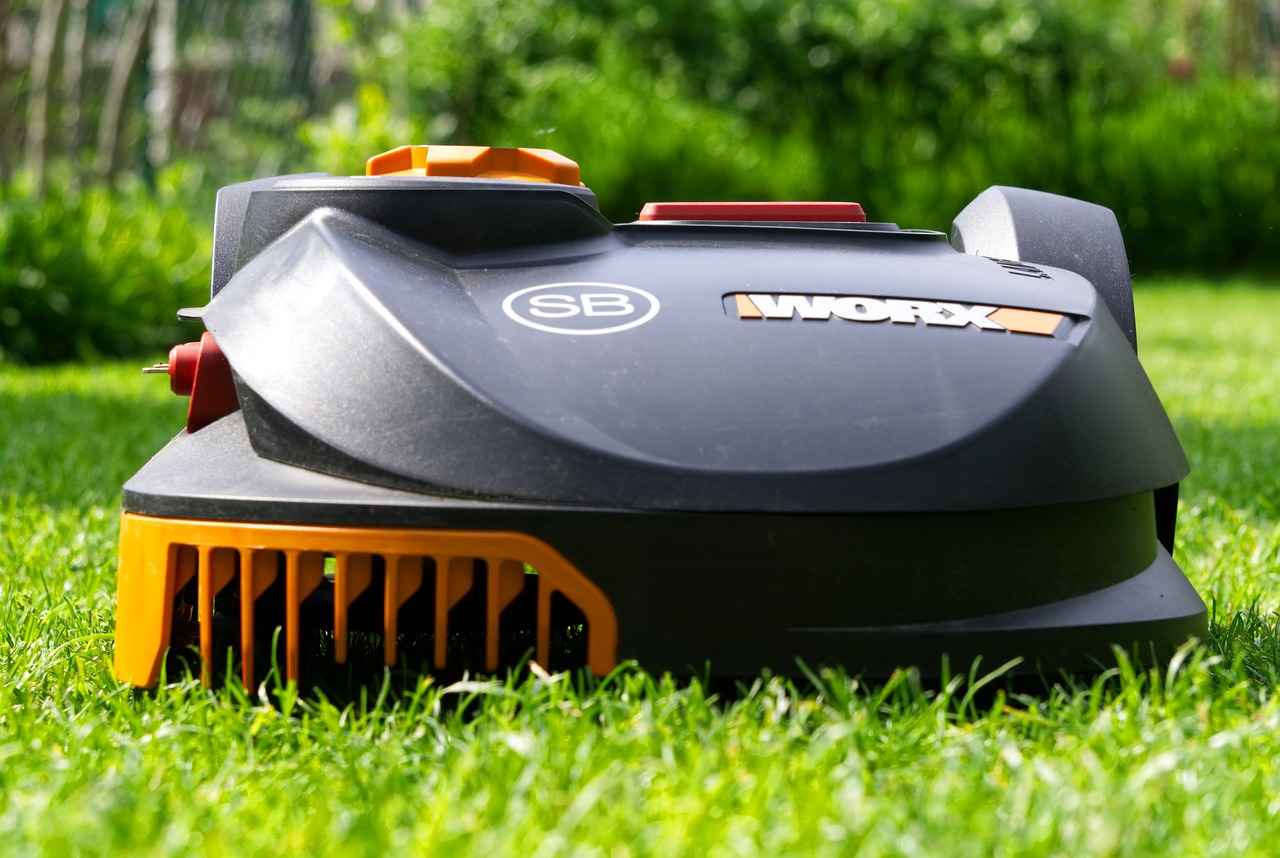
Understanding Smart Home Technology
has become essential in today’s digital age. This technology involves a range of devices that connect to the internet, enabling users to remotely control and automate various functions within their homes. This not only enhances convenience but also significantly boosts efficiency for everyday tasks.
At its core, smart home technology allows homeowners to manage their living spaces more effectively. Devices such as smart thermostats, lights, and security systems can be controlled via smartphones or voice commands, making daily routines simpler and more streamlined.
One of the most appealing aspects of smart home technology is its ability to integrate with various systems. For instance, a smart thermostat can learn your heating and cooling preferences and adjust accordingly, optimizing energy usage and leading to cost savings. Similarly, smart lighting can be programmed to turn on and off at specific times, providing both security and energy efficiency.
Moreover, the convenience of controlling home functions remotely cannot be overstated. Whether it’s adjusting the thermostat while at work or checking security cameras from vacation, smart home technology provides peace of mind and flexibility. The ability to receive real-time notifications about home security or energy usage fosters a sense of control that many homeowners appreciate.
In addition to convenience and efficiency, smart home devices contribute to enhanced security. Smart cameras and alarm systems offer real-time monitoring, allowing homeowners to keep an eye on their property from anywhere. This integration of technology not only protects homes but also enhances the overall living experience.
As the market for smart home technology continues to grow, it is essential for consumers to understand the various options available. By investing in these devices, users can create a more connected and efficient home environment, tailored to their specific needs and preferences.
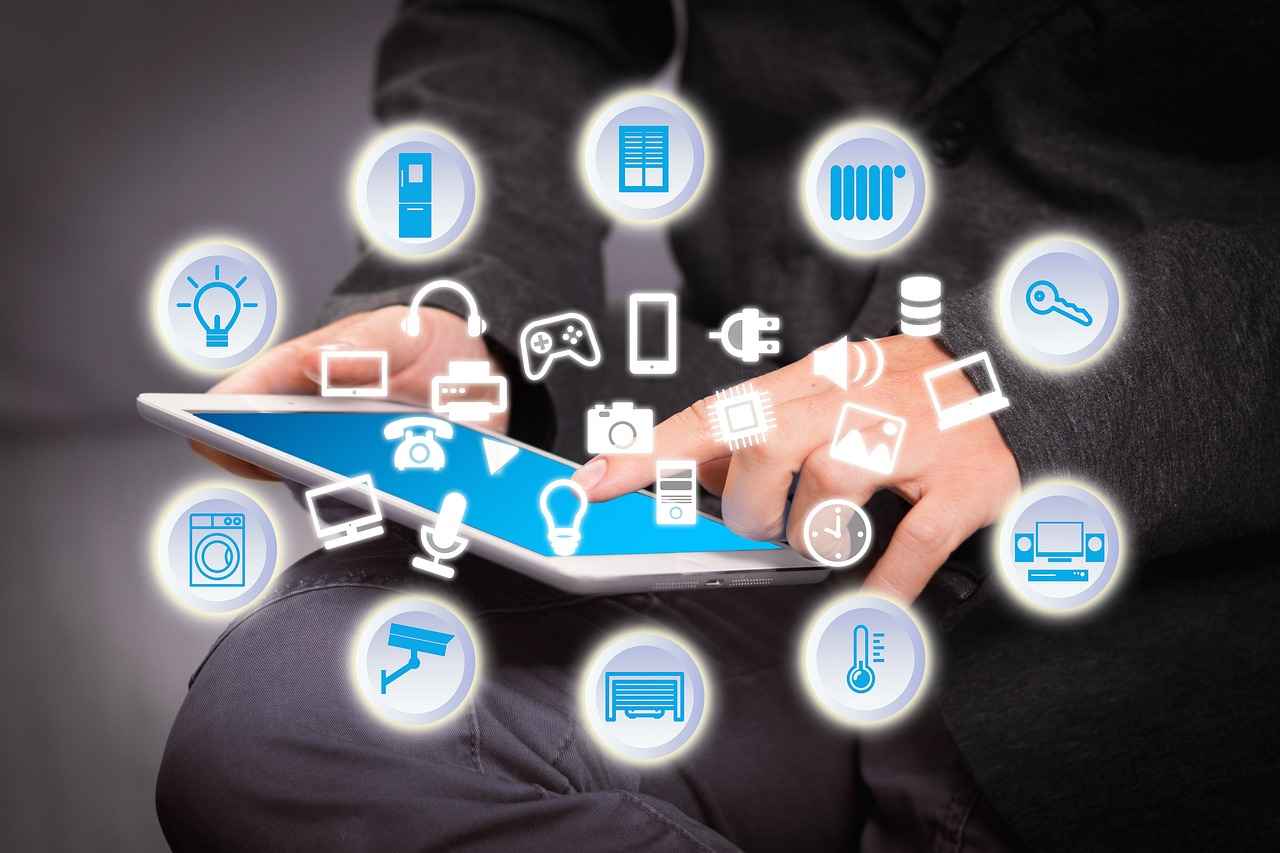
Key Benefits of Smart Home Devices
In today’s fast-paced world, smart home devices have become increasingly popular due to their ability to enhance the overall quality of life in modern households. These devices offer a myriad of advantages that cater to the needs of homeowners seeking efficiency, security, and convenience.
- Energy Efficiency: Smart home devices such as smart thermostats and energy monitors help track and manage energy consumption. By optimizing heating, cooling, and lighting, these devices can significantly reduce utility bills and promote a more sustainable lifestyle.
- Enhanced Security: With the integration of smart security systems, including cameras and doorbell monitors, homeowners can enjoy real-time monitoring and alerts. This added layer of security provides peace of mind, especially for those who travel frequently or live in urban areas.
- Improved Comfort: Smart devices allow users to customize their living environment. From adjusting the temperature to changing the lighting ambiance, homeowners can create a comfortable space tailored to their preferences.
- Increased Convenience: The ability to control devices remotely through smartphones or voice-activated assistants streamlines daily routines. Tasks such as turning off lights or adjusting the thermostat can be accomplished with a simple command or tap.
- Home Automation: Smart home devices can work together to create automated routines. For instance, setting up a morning routine where lights gradually brighten and the coffee maker starts brewing can simplify busy mornings.
In summary, the integration of smart home devices not only enhances the security and comfort of a home but also promotes energy efficiency and convenience. As technology continues to evolve, the benefits of these devices will only become more pronounced, making them a worthwhile investment for any modern household.
Energy Efficiency
In today’s world, where environmental awareness is at an all-time high, has become a crucial focus for many households. The advent of smart home technology has revolutionized the way we consume energy, making it easier than ever to monitor and reduce our usage. This not only leads to lower utility bills but also contributes to a smaller carbon footprint, which is particularly appealing to eco-conscious consumers.
Smart devices equipped with energy monitoring capabilities allow homeowners to keep track of their energy consumption in real-time. For example, smart thermostats can learn your heating and cooling preferences, adjusting automatically to optimize energy use. This technology can result in significant savings over time, making it a wise investment for those looking to enhance their home’s energy efficiency.
Moreover, smart lighting systems provide users with the ability to control brightness and color remotely. By scheduling lights to turn off when not needed or adjusting them based on natural light availability, households can significantly reduce their energy consumption. In addition, smart plugs can transform ordinary appliances into energy-efficient devices by allowing users to turn them off remotely or set schedules to minimize usage during peak hours.
As the demand for energy-efficient solutions grows, manufacturers are continuously innovating to provide smarter and more efficient devices. Popular brands such as Nest, Ecobee, and Philips Hue offer a variety of options that cater to different needs and preferences. These devices not only enhance comfort and convenience but also foster a more sustainable lifestyle.
In conclusion, embracing smart home technology is a significant step towards achieving greater energy efficiency. By investing in smart devices, homeowners can enjoy the dual benefits of reduced energy costs and a positive impact on the environment, paving the way for a more sustainable future.
Enhanced Security Features
In today’s world, ensuring the safety of your home is paramount. Smart home security devices have revolutionized the way homeowners protect their properties. These devices, including cameras, alarms, and motion sensors, offer real-time monitoring and instantaneous alerts, which can provide invaluable peace of mind for those concerned about safety.
One of the most significant advantages of smart security systems is their ability to connect to your smartphone or tablet. This connectivity allows homeowners to monitor their property from anywhere in the world. Whether you’re at work, on vacation, or simply running errands, you can check in on your home through live video feeds and receive notifications if any unusual activity is detected.
Moreover, many smart security devices come equipped with advanced features such as facial recognition, night vision, and two-way audio. These features not only enhance security but also allow for greater interaction with visitors or potential intruders. For instance, you can communicate with delivery personnel or deter unwanted visitors by speaking through your security camera.
When selecting a smart security system, it’s essential to consider various factors. Look for devices that offer high-definition video quality, wide-angle lenses, and reliable connectivity options. Additionally, many systems require a subscription for cloud storage, so it’s wise to evaluate the costs associated with these services.
Integrating your smart security system with other smart home devices, such as smart locks and lighting, can create a comprehensive and automated security solution. For example, you can program your lights to turn on when your security camera detects motion, creating the illusion that someone is home.
In conclusion, investing in smart home security devices is a proactive measure for safeguarding your home. With features that provide real-time alerts and remote monitoring, these systems not only enhance safety but also offer convenience and peace of mind for homeowners.

Essential Smart Home Devices for Beginners
For those just stepping into the world of smart home technology, choosing the right devices can be a game-changer. These devices not only enhance your home’s functionality but also provide a user-friendly experience that makes integrating technology into your daily life seamless and enjoyable.
When starting your smart home journey, consider focusing on devices that offer the most benefits while being easy to use. Here are some essential smart home devices that are perfect for beginners:
- Smart Speakers: These devices act as the central hub of your smart home. With voice-activated features, they allow you to control other smart devices, play music, and even provide information, making them an excellent starting point.
- Smart Lighting: Smart bulbs and lighting systems can be controlled remotely, allowing you to adjust brightness and color to suit your mood or save energy. They are a practical addition that enhances both ambiance and efficiency.
- Smart Thermostats: These devices learn your heating and cooling preferences over time, optimizing your energy usage and significantly reducing your utility bills. Investing in a smart thermostat is a wise choice for energy-conscious homeowners.
- Smart Security Cameras: Enhancing your home’s security is crucial. Smart cameras provide real-time monitoring and alerts, ensuring you can keep an eye on your property from anywhere.
- Smart Plugs: These versatile devices allow you to control any appliance plugged into them remotely. They can help schedule devices, monitor energy usage, and automate your home effortlessly.
When selecting your first smart home devices, consider how they will integrate with one another. Many devices are designed to work together, creating a cohesive smart home ecosystem that enhances your living experience.
In conclusion, starting with user-friendly and beneficial devices will pave the way for a successful smart home journey. By focusing on convenience, security, and efficiency, you can transform your living space into a connected haven that meets your needs.
Smart Speakers
have rapidly become a cornerstone of the smart home ecosystem, serving as the central hub for controlling various smart devices. These innovative gadgets not only offer voice-activated assistance but also provide a plethora of entertainment options, making them an essential choice for beginners venturing into smart home technology.
One of the primary advantages of smart speakers is their ease of use. With simple voice commands, users can control lights, thermostats, and even security systems, all from a single device. This level of convenience is particularly appealing for newcomers who may feel overwhelmed by the array of smart home products available.
Moreover, smart speakers often come equipped with integrated virtual assistants like Amazon Alexa, Google Assistant, or Apple Siri. These assistants can answer questions, play music, set reminders, and provide weather updates, enhancing the overall user experience. The ability to perform multiple functions seamlessly makes smart speakers a versatile addition to any home.
When considering a smart speaker, it’s essential to evaluate compatibility with other smart devices. Most popular models support a wide range of third-party devices, allowing for a more cohesive smart home environment. This interoperability is crucial for beginners who may not yet have a comprehensive set of smart devices.
Additionally, many smart speakers feature multi-room audio capabilities, enabling users to play music in different rooms simultaneously. This feature is perfect for entertaining guests or simply enjoying music throughout the home without the hassle of traditional audio setups.
In conclusion, smart speakers are an excellent starting point for anyone looking to dive into the world of smart home technology. Their user-friendly nature, combined with the ability to control other devices and provide entertainment, makes them a popular choice for beginners. By investing in a smart speaker, you can enhance your home’s functionality and enjoy a more connected lifestyle.
Smart Lighting
has become an essential feature in modern homes, providing not only convenience but also a significant boost in energy efficiency. With the ability to control brightness and color remotely, smart lighting systems allow users to create the perfect ambiance for any occasion. Whether it’s a cozy movie night or a vibrant gathering with friends, these systems can transform the atmosphere with just a few taps on a smartphone or through voice commands.
One of the most appealing aspects of is its energy-saving capabilities. Traditional lighting can contribute significantly to energy consumption, but smart bulbs are designed to use less electricity while offering the same level of brightness. Many systems include features like scheduling and dimming, which further enhance energy efficiency by ensuring lights are only used when needed.
Moreover, smart lighting can be integrated with other smart home devices, creating a more cohesive and automated living environment. For example, lights can be programmed to turn on when a smart door lock is activated, providing a welcoming glow as you enter your home. This level of integration not only enhances convenience but also improves security, as you can set your lights to simulate occupancy while you are away, deterring potential intruders.
In addition to practical benefits, smart lighting offers a range of aesthetic options. Users can choose from millions of colors and various lighting effects to match their mood or decor. This flexibility allows homeowners to personalize their space in ways that traditional lighting simply cannot offer.
As smart home technology continues to evolve, the potential for smart lighting systems will only expand. With advancements in artificial intelligence and machine learning, we can expect even smarter solutions that learn user preferences and adapt to their routines automatically.
In conclusion, smart lighting systems are a practical addition to any smart home, providing enhanced ambiance, energy efficiency, and a multitude of customization options. As you embark on your smart home journey, consider investing in smart lighting to elevate your living experience.

Smart Thermostats: A Game Changer
In today’s world, where energy efficiency and cost savings are paramount, smart thermostats have emerged as a revolutionary tool for homeowners. These innovative devices are designed to learn your heating and cooling preferences over time, allowing for optimized energy usage. By automatically adjusting the temperature based on your habits, they can help reduce energy consumption significantly, translating to substantial savings on utility bills.
One of the key features of smart thermostats is their ability to adapt to your lifestyle. For instance, if you typically lower the temperature during the night or raise it when you leave for work, these devices can learn these patterns and adjust accordingly. This not only enhances comfort but also ensures that energy isn’t wasted when it’s not needed.
Moreover, many smart thermostats come equipped with mobile apps, enabling you to control your home’s temperature remotely. This feature proves invaluable for busy homeowners who want to ensure their homes are at a comfortable temperature upon arrival. Additionally, some models offer energy reports that provide insights into your energy usage, helping you make informed decisions about your consumption habits.
Investing in a smart thermostat is not just about convenience; it’s also about making a wisely informed investment that pays off in the long run. With potential savings on energy bills and the added benefit of a more comfortable living environment, these devices stand out as a smart choice for any homeowner looking to enhance their home’s efficiency.
In conclusion, smart thermostats are indeed a game changer in home automation. They seamlessly integrate technology with daily living, offering a perfect blend of comfort, convenience, and energy efficiency. As you embark on your journey to a smarter home, consider starting with a smart thermostat to experience the benefits firsthand.
Popular Smart Thermostat Brands
When it comes to enhancing your home’s energy efficiency and comfort, smart thermostats are a crucial addition. Several brands stand out in the market, each offering unique features and compatibility with various home systems. Below, we explore some of the most reputable brands in the smart thermostat industry.
- Nest:
Nest, a subsidiary of Google, is renowned for its user-friendly interface and intelligent learning capabilities. The Nest Learning Thermostat adapts to your schedule, optimizing temperature settings to save energy while maintaining comfort. Its sleek design and integration with Google Home make it a popular choice among homeowners.
- Ecobee:
Ecobee offers a range of smart thermostats that come equipped with room sensors to manage hot or cold spots in your home effectively. The Ecobee SmartThermostat with Voice Control features built-in Alexa, allowing voice commands for temperature adjustments and integration with other smart home devices.
- Honeywell:
Honeywell’s smart thermostats, such as the Honeywell Home T9, provide robust features including geofencing and adaptive recovery. This brand is known for its reliability and compatibility with various HVAC systems, making it a versatile option for many households.
- Emerson:
The Emerson Sensi Touch thermostat is another excellent choice, offering a user-friendly touchscreen interface and compatibility with numerous smart home platforms. Its energy-saving features and remote access capabilities make it appealing for tech-savvy homeowners.
Choosing the right smart thermostat depends on your specific needs, existing home systems, and personal preferences. Each of these brands provides unique features that can enhance your home’s energy efficiency and comfort.
In summary, investing in a smart thermostat from a reputable brand not only contributes to energy savings but also simplifies your daily routine by allowing for greater control over your home’s climate.
Installation and Setup Tips
Installing a smart thermostat can be a simple yet rewarding task for homeowners looking to enhance their energy efficiency. However, it is essential to approach the process with care to ensure optimal performance and compatibility with your existing HVAC system.
- Read the Manufacturer’s Instructions: Before starting, carefully review the user manual provided by the manufacturer. This document will outline specific steps tailored to your model, ensuring a smoother installation process.
- Check Compatibility: Not all smart thermostats work with every HVAC system. It is crucial to verify that the thermostat you choose is compatible with your current setup. Many manufacturers provide online tools to help you determine compatibility.
- Gather Necessary Tools: Before you begin, gather all the tools you may need, such as a screwdriver, drill, and level. Having everything on hand will streamline the installation process.
- Turn Off Power: Safety should always come first. Make sure to turn off the power to your HVAC system at the circuit breaker to avoid any electrical hazards during installation.
- Label Wires: As you disconnect the old thermostat, label each wire according to its terminal. This will make it easier to connect them to the new smart thermostat correctly.
- Follow Setup Instructions: Once installed, follow the on-screen prompts to configure your new thermostat. This typically includes connecting it to your Wi-Fi network and setting your preferences for heating and cooling.
- Test the System: After installation, turn the power back on and test the thermostat to ensure it is functioning correctly. Adjust the settings to verify that the HVAC system responds appropriately.
By following these tips, you can ensure a successful installation of your smart thermostat, paving the way for improved energy management and comfort in your home.

Smart Security Systems: Protecting Your Home
In today’s world, enhancing your home security is more crucial than ever. Investing in smart security systems, including advanced cameras and doorbell monitors, not only boosts your home safety but also provides homeowners with the ability to monitor their property from anywhere in the world. This technology has revolutionized how we protect our homes, offering peace of mind and convenience.
Why Choose Smart Security Systems?
- Remote Monitoring: Smart security systems allow homeowners to check live feeds from their security cameras through mobile apps. This means you can keep an eye on your property while at work or on vacation.
- Real-Time Alerts: Receive instant notifications on your smartphone if any unusual activity is detected, enabling you to respond quickly to potential threats.
- Integration with Other Smart Devices: Many smart security systems can be integrated with other smart home devices, such as lighting and alarms, creating a comprehensive security network.
Types of Smart Security Devices
1. Smart Cameras - Indoor and outdoor options - Night vision capabilities - Two-way audio features2. Video Doorbells - HD video quality - Motion detection - Pre-recorded responses3. Smart Locks - Keyless entry - Remote locking/unlocking - Activity logs
Choosing the Right Security System
When selecting a smart security system, consider important factors such as camera resolution, connectivity options, and any subscription fees for cloud storage. It’s essential to assess your specific needs and budget to find the best fit for your home.
Conclusion
Investing in smart security systems is a proactive step towards safeguarding your home. With the ability to monitor your property remotely and receive real-time alerts, you can enhance your peace of mind. By integrating these systems with other smart devices, you create a seamless and effective security solution that not only protects your home but also elevates your overall smart home experience.
Choosing the Right Security System
is a crucial decision for homeowners looking to enhance their safety and peace of mind. With the rise of smart home technology, selecting an effective security system involves evaluating various elements to ensure it meets your specific needs.
When considering a smart security system, the following factors should be prioritized:
- Camera Resolution: High-definition cameras are essential for clear images and videos, especially for identifying faces or license plates. Look for systems that offer at least 1080p resolution.
- Connectivity Options: Choose systems that provide flexible connectivity, such as Wi-Fi, Ethernet, or cellular options. This ensures that your security system remains operational even during internet outages.
- Subscription Fees: Many smart security systems offer cloud storage for recorded footage, often requiring a monthly subscription. Compare costs and features to find a plan that fits your budget without compromising on essential services.
- Integration with Other Devices: A good security system should seamlessly integrate with your existing smart home devices, like smart lights and locks, allowing for a comprehensive security solution.
- Mobile App Functionality: Ensure the system includes a user-friendly mobile app that allows you to monitor your home remotely, receive alerts, and control devices easily.
Furthermore, consider the installation process. Some systems offer DIY installation, while others may require professional help. Assess your comfort level with technology and choose accordingly.
In conclusion, selecting the right security system involves careful consideration of various factors to ensure you find a solution that meets your security needs effectively. By focusing on camera quality, connectivity, and integration, you can enhance the safety of your home.
Integrating Security with Other Devices
In today’s increasingly connected world, integrating smart security systems with other smart home devices is becoming essential for homeowners seeking both protection and convenience. By creating a cohesive ecosystem, you can enhance your home’s security while also simplifying daily tasks.
Smart security systems, such as cameras and alarms, can be seamlessly linked with devices like smart lights and smart locks. This integration allows for a more comprehensive security solution. For example, when a security camera detects motion, it can automatically turn on outdoor lights, illuminating the area and potentially deterring intruders. Similarly, if a doorbell camera senses someone at the door, you can unlock the door remotely through your smart lock, providing convenience without compromising safety.
Moreover, the integration of these devices can enhance your home automation experience. Consider the following benefits:
- Real-time Alerts: When integrated with your smartphone, these systems can send immediate notifications, allowing you to respond quickly to any security concerns.
- Remote Monitoring: You can monitor your home from anywhere, ensuring peace of mind whether you’re at work or on vacation.
- Energy Efficiency: Smart lighting can be programmed to turn off when security systems are activated, reducing energy consumption.
Additionally, many smart security systems offer compatibility with popular home automation platforms, such as Amazon Alexa or Google Assistant. This allows for voice control and automation routines that enhance both security and convenience. For instance, you can set up a routine that locks all doors and turns off lights at a specific time each night.
In conclusion, integrating smart security systems with other smart home devices not only enhances your home’s safety but also streamlines your daily activities. By investing in a comprehensive smart home ecosystem, you can enjoy the benefits of a secure and convenient living space.

Smart Plugs: The Gateway to Home Automation
Smart plugs are an innovative solution that enables you to control any device plugged into them from anywhere, transforming your home into a more efficient and convenient space. These devices serve as a simple entry point into the world of home automation, making them ideal for beginners who are looking to enhance their living environment with minimal effort.
By utilizing smart plugs, users can easily manage their devices remotely through a smartphone app or voice commands, allowing for seamless integration into daily routines. Whether it’s turning on a lamp before you arrive home or scheduling your coffee maker to start brewing at a specific time, smart plugs offer a myriad of possibilities.
- Convenience: Control devices from anywhere with your smartphone.
- Scheduling: Set timers for devices to turn on or off automatically.
- Energy Monitoring: Track energy usage to identify opportunities for savings.
Moreover, smart plugs are compatible with various home automation systems, including Amazon Alexa and Google Assistant, allowing for voice-activated control. This feature not only enhances user experience but also contributes to a more eco-friendly lifestyle by promoting energy efficiency.
When considering smart plugs, popular options include brands like TP-Link, Wemo, and Amazon. Each offers unique features, such as energy monitoring capabilities and integration with other smart home devices, catering to diverse user preferences.
In conclusion, smart plugs are an excellent starting point for anyone venturing into home automation. They provide a blend of convenience, control, and energy efficiency, making them a practical addition to any modern household. Embracing smart plugs can significantly simplify your daily life while paving the way for further advancements in home technology.
Benefits of Using Smart Plugs
Smart plugs are increasingly becoming essential components of modern smart homes. They offer a range of functionalities that not only enhance convenience but also promote energy efficiency. Below are some of the key benefits of using smart plugs in your daily life:
- Remote Control: With smart plugs, you can control any device plugged into them from anywhere using your smartphone. This feature allows you to turn devices on or off remotely, providing unparalleled convenience.
- Scheduling: Smart plugs enable users to set schedules for their devices. For instance, you can program your coffee maker to start brewing at a specific time each morning, ensuring that your coffee is ready when you wake up.
- Energy Monitoring: Many smart plugs come with energy monitoring capabilities. They track the energy consumption of connected devices, allowing you to identify energy hogs and make informed decisions to reduce your electricity bills.
- Voice Control: Compatible with voice assistants like Amazon Alexa and Google Assistant, smart plugs allow you to control your devices using simple voice commands, adding an extra layer of convenience to your daily routine.
- Enhanced Safety: By scheduling devices like lamps to turn on and off at specific times, smart plugs can create the illusion that someone is home, which can deter potential intruders and enhance your home security.
In summary, smart plugs serve as a versatile gateway into the world of home automation, making it easier to manage your devices, save energy, and enhance your overall quality of life. Whether you are just starting your journey into smart home technology or looking to expand your existing setup, smart plugs are a practical and beneficial addition.
Popular Smart Plug Options
When venturing into the world of smart home technology, smart plugs are often one of the first devices that users consider. They serve as an essential gateway to home automation, allowing you to control various appliances with just a few taps on your smartphone or through voice commands. Here, we will explore some of the most popular smart plug options available on the market today, focusing on their unique features and compatibility.
| Brand | Key Features | Compatibility |
|---|---|---|
| TP-Link | Remote control, energy monitoring, scheduling | Alexa, Google Assistant, IFTTT |
| Wemo | Easy setup, away mode, voice control | Alexa, Google Assistant, Apple HomeKit |
| Amazon Smart Plug | Simple setup, Alexa integration, voice control | Alexa only |
Each of these brands offers unique advantages:
- TP-Link: Known for its user-friendly app and energy monitoring capabilities, TP-Link smart plugs allow you to track energy consumption in real-time, helping you save on utility bills.
- Wemo: With its away mode feature, Wemo smart plugs can randomly turn on and off devices to give the appearance that someone is home, enhancing security.
- Amazon Smart Plug: This plug is perfect for users who are already invested in the Amazon ecosystem, providing seamless integration with Alexa for voice commands.
In conclusion, choosing the right smart plug can significantly enhance your home automation experience. Whether you prioritize energy monitoring, security features, or seamless integration with existing devices, options from brands like TP-Link, Wemo, and Amazon cater to a variety of user preferences and needs. As you embark on your smart home journey, consider starting with one of these reliable smart plugs to unlock new levels of convenience and efficiency in your daily life.

Conclusion: Your Smart Home Journey Begins
Embarking on your smart home journey can be an exciting and transformative experience. By starting with essential devices, you not only enhance your living environment but also pave the way for a more convenient, secure, and efficient lifestyle. The integration of smart technology into your home allows for seamless control and automation, making daily tasks easier and more enjoyable.
When selecting your first smart devices, consider focusing on those that offer immediate benefits. For instance, smart speakers can serve as the central hub for your smart ecosystem, allowing you to control other devices through voice commands. This not only adds convenience but also makes technology more accessible for all household members.
Smart lighting is another excellent starting point. With the ability to adjust brightness and color remotely, you can create the perfect ambiance for any occasion while also saving on energy costs. Similarly, smart thermostats optimize your heating and cooling systems, learning your preferences over time to enhance comfort and reduce utility bills.
Security should also be a priority in your smart home setup. Investing in smart security systems, such as cameras and smart locks, provides peace of mind by allowing you to monitor your home from anywhere. Integrating these systems with other devices, like smart lights, can further enhance your home’s safety.
Finally, don’t overlook the benefits of smart plugs. They are an easy entry point into home automation, enabling you to control any device plugged into them and schedule operations to fit your lifestyle.
In conclusion, starting your smart home journey with essential devices is a step towards a more connected and efficient living space. By prioritizing convenience, security, and energy efficiency, you can create a smart home that not only meets your needs but also enhances your overall quality of life.
Frequently Asked Questions
- What are the best smart home devices for beginners?
For beginners, starting with smart speakers, smart lighting, and smart plugs is highly recommended. These devices are user-friendly and provide a solid foundation for building a smart home.
- How do smart thermostats save energy?
Smart thermostats learn your heating and cooling preferences over time, adjusting automatically to optimize energy usage. This leads to lower utility bills and a more efficient home environment.
- Can I integrate my smart security system with other devices?
Absolutely! Integrating your smart security system with devices like smart lights and smart locks can enhance your home’s security and convenience, creating a cohesive smart home ecosystem.
- Do I need a hub for my smart devices?
While some devices require a hub for connectivity, many modern smart devices can connect directly to your Wi-Fi network, making setup easier and more streamlined for beginners.
- Are smart plugs worth it?
Definitely! Smart plugs are a fantastic entry point into home automation, allowing you to control any device remotely, schedule usage, and monitor energy consumption, all of which enhance convenience.
